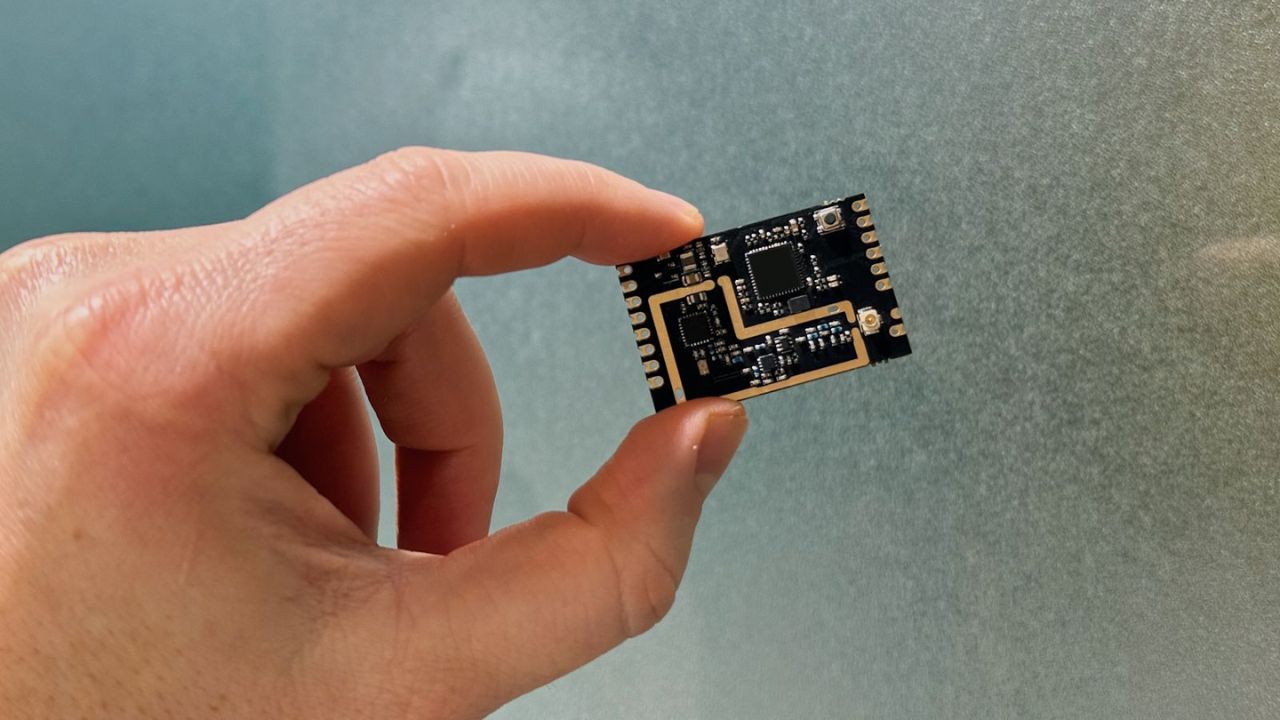
A Ukrainian drone tech firm has unveiled an alternative to GPS navigation.
Sine.Engineering built the system to counter Russia’s electronic warfare, which has wreaked havoc on GPS signals.
To dodge the interference, Sine invented a satellite-free replacement.
The approach is inspired by time-of-flight (ToF) methods, which began tracking aircraft long before the advent of GPS.
Unlike GPS, ToF systems don’t rely on satellites. Instead, they measure the time it takes a signal to between a transmitter and a target.
In Sine’s framework, the calculations come from a communication module for drones.
Smaller than a playing card, the module shares signals with a ground station and two beacons. It then measures how long the signals take to travel.
As the beacons and ground station have known, static coordinates, the software can precisely determine a drone’s coordinates. And because the module runs on multiple bandwidths, the aircraft can elude jamming that targets specific frequencies.
Crucially, the system is also relatively cheap. By providing affordable accuracy, Sine plans to accelerate Ukraine’s transition to autonomous drones.
The country’s armed forces have backed the plans. Already, they have deployed Sine’s module in military operations.
New route for drones
According to Sine, the system is already active in intelligence, surveillance, and reconnaissance.
The next target is first-person view (FPV) drones — cheap but effective aircraft equipped with cameras that send footage to remote pilots.
Testing on the FPVs began last month.
“We expect battlefield deployment in the near future,” Andriy Chulyk, Sine’s CEO and co-founder, told TNW via email.
Alongside autonomous FPVs, Chulyk plans to support swarm operations. “Our technology enables coordinated flights of multiple drones, allowing them to operate as cohesive units,” he said.
Yet autonomy is not the sole objective. Sine’s module also aims to lower entry barriers for human pilots of unmanned aircraft.
“It significantly simplifies drone operation through automation and intuitive control interfaces similar to consumer drones like Mavic,” Chulyk said.


Going to market
Sine was founded in 2022 to counter Russian drone operations. As the aerial combat evolved, the startup began exploring new navigation systems.
Due to widespread jamming and spoofing, GPS had become a critical vulnerability. At the same time, cheap FPV drones were transforming the battlefields. Yet their positioning systems lacked sophistication.
Sine’s founders decided to build an affordable upgrade.
Their invention promises to improve navigation, expand autonomy, and evade electronic warfare.
In Chulyk’s view, such enhancements are becoming essential.
“Without reliable navigation capabilities, the transition to autonomous operations — necessary for true scalability — remains out of reach,” he said.
“This creates a critical capability gap in modern warfare, where the ability to deploy large numbers of autonomous platforms could provide decisive advantages.”





